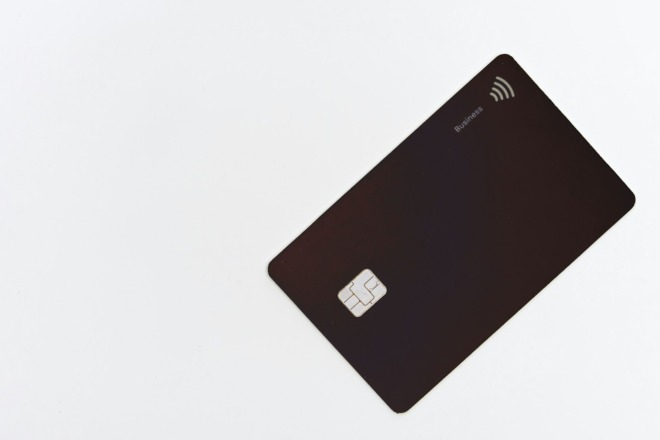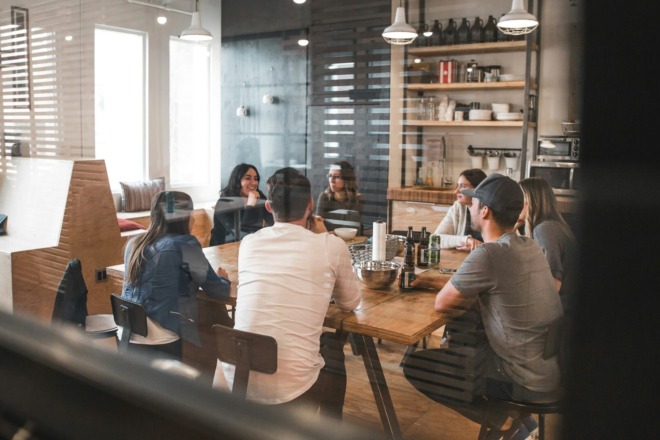The environment or space in which you work, believe it or not, has a lot of influence over your productivity. If it’s messy, you’re going to run into problems. It is known that clutter potentially increases stress levels, ruins your diet and hinders productivity.
However, it’s not just about what’s muddying up the space — it’s also about how it makes you feel. Vibrant, open spaces tend to breed more productivity because of how much freedom they provide, so long as there aren’t too many surrounding distractions. The combination of colors, furniture and lighting can evoke certain emotions, which can be good or bad depending on the space’s purpose.
It makes sense to focus on office designs and working areas to boost productivity and creativity. What key elements or office design spaces can you use to ensure your work flows freely? What existing designs or features can you draw inspiration from? Here are some examples.
1. Open Concept
If you work on or with a team, communication is paramount to smooth operations and optimal productivity — that’s why many larger companies or organizations follow open concept floorplans and designs. They have fewer doors or obstacles to deal with when it comes to collaboration.
Of course, you still have to do it in a way that fosters collaboration and productive conversation as opposed to hindering performance. We all have that one colleague who can be a little too communicative. Balance open space with private work areas where people can escape and find silence.
A successful open space provides plenty of room and air to feel free, but still includes a niche or personal cubby for each worker. If you need a real-world example, check out The Barbarian Group’s design office. The room consists of a 4400-square-foot contiguous desk that accommodates everyone on the team. Each member gets their own space, of course.
2. Lighting
You might not think so, but lighting plays a huge role in productivity, specifically when it comes to inspiration, design and creative focus. It also happens to be one of the most underrated and overlooked design elements of the average office.
Bad lighting can contribute to fatigue, eyestrain, headaches and irritability. Darker spaces with little to no light, for instance, have a knack for boosting depression and feelings of isolation.
If you can’t change the lighting itself — like in a corporate building — you can install light therapy devices to help alleviate some of the stress. Airbnb’s bright and warming design studio in San Francisco uses a combination of lighting to create a genuinely productive space.
Seeking natural light helps boost the moods of your workers and reduce your use of artificial light. You may even be able to reduce your carbon footprint with a little pre-planning or by adding extra windows.
3. Create Zones
You should imagine your office is a city or a small urban center instead of a single space with one direct purpose. All cities have zones, from the basics like residential and industrial to how the busiest spaces are handled — including parks, recreation centers and more.
What’s the point? Any good office space has zones — or layers, if you will. A kitchen might allow workers to grab a bite to eat and talk about life outside of work. A collaborative space with couches and closer seating serves as an excellent space for colleagues to work together. More closed off or private spaces like cubbies or smaller offices allow people to separate themselves when they need to and dig in.
Google’s Zurich office even includes fun activities for their team members to take a break, such as a climbing wall, slide, basketball court and even a hopscotch space. Fun or recreational spaces are often referred to as break-out spaces, giving employees time to escape from work and catch a break.
What do the zones in a strong office layout look like? You’ll have different areas that service various events, activities and working conditions. You see this a lot in home offices, too, where one wall might have a desk, another might have a futon or couch and so on.
Do you want a dedicated space for printing or desktop printers for those who use them most? The high price of original equipment manufacturer (OEM) cartridges means laser printers can be prohibitive to smaller businesses. Consider other options that meet the same need without creating OEM supply costs beyond your ability. You also need space to store extra printer cartridges when not in use.
Consider the daily tasks you and your employees complete. How can your zones best serve those needs?
4. Room Temperature
Did you know warmer temperatures tend to help people stay productive? This can vary depending on the person, but on average, higher temperatures tend to improve working conditions.
Even an adjustment as simple as a few degrees can make a world of difference. Working in a 68-degree space is going to vary significantly from even a 70- to 73-degree space, especially for those who are more susceptible to cold.
Try cranking up the temperature to see if it helps. Open up a space to allow in more natural warmth in regions with mild climates, or add insulation if your office is in a colder area. If you work in a building where you can’t control the temperature, it might be better to bundle up or get space heaters.
At the same time, be considerate of other workers. Some people tend to feel warmer than others. If you crank the heat up too high, you might make some of your staff miserable, which will have the opposite effect on productivity as they seek an escape from being drenched in sweat.
5. Scents
Generally, you may not notice how much a role scent plays in your productivity until you’re dealing with something particularly rank. But surely, you’ve heard before that peppermint can boost your mood and helps provide a little energy? The same is true of other scents you should be using in your workspace.
Pine and cinnamon scents can boost focus, lavender promotes relaxation and positive energies, peppermint will give a jolt of energy and citrus can both wake you up and lift your spirits.
That doesn’t mean you should blast your workspace with various colognes and perfumes. Instead, it’s best to inject subtle hints using an essential oil diffuser, plug-in sprayers or even scented candles. Check with your staff to make sure no one has allergies or sensitivities to fragrances.
6. Air Quality
Being trapped in an indoor space that is rarely exposed to fresh air can be bad for your health, as a wide variety of toxins and contaminants can build up inside. According to OSHA, poor air quality in office environments costs employers $15 billion annually from “worker inefficiency and sick leave” alone.
If you work in a home office, try opening up some windows. Get plants that produce clean, fresh oxygen. Check your air filters to ensure they’re clean and not clogged. Use an air purifier in smaller spaces to filter out bad contaminants.
You can do the same in larger, company offices, too. Put some plants on your desk, get some air filtration devices or take frequent breaks to go out and get some fresh air.
7. Standing Desks
A sedentary lifestyle — one spent mostly sitting — is not good for you at all. In addition to being linked to heart disease, sitting too much can also cause diabetes, premature death and physical pain from poor posture.
A new trend we’re seeing in office designs is the emergence of a standing or tall desk. It not only forces you to get up and get a little more active, but it also helps boost focus and creativity because you’re not hunched down or leaning back in a chair.
A study published by the University of Leicester in BMJ found that standing desks improve productivity by as much as 52 percent and also improve general health.
So, get up. Convert your desk into a taller surface or toss out the conventional design and come up with something new. Standing is better for your health, productivity and creativity — what more do you need?
8. Shared Creative Spaces
Sometimes — especially in the design industry — it helps to retreat to more of a collaborative, active space to find ideas and inspiration.
For example, dedicating an entire room for brainstorming can do wonders in a design or creative setting. Use a chalkboard or whiteboard to post sticky notes with ideas, draw sample designs and more. Adorn the tables with helpful guides or design books. Configure workstations to include inspirational content, media and other applications.
In a home office, this might be on a smaller scale. For example, you could dedicate a single corkboard to posting your ideas and reminders as opposed to an entire chalkboard.
Adobe’s Utah offices took this a step further, of course, incorporating the idea of shared creative spaces into the entire facility. From collaborative conference rooms to an employee cafe there’s plenty of creative energy.
9. Room Color
The color blue is often associated with productivity. Green helps alleviate stress and eye fatigue. Yellow boosts positivity, creativity and overall enjoyment. Red is said to help increase blood flow, regulate heart rates and evoke strong emotions.
Whether you believe these points or not, it’s obvious that certain colors elicit strong emotions, which can have a profound impact on your energy and creativity. This is also part of the reason why darker, more confined spaces tend to feel isolated. Darker colors like black can amplify feelings of negativity and depression, especially when used in small office spaces or rooms.
Maybe it’s time to brighten up the walls of your office or building.
10. Hot Desking
Many brands are going to a remote or hybrid remote model, where employees work from home most of the time. It doesn’t make sense to have assigned desks for most of your workers in a telecommuting environment.
One option is creating hot desking options for your workers. They don’t have assigned desks but choose one that’s open. Advantages include working near different people and engaging in conversations with people from different backgrounds and with varied skills.
The marketing agent who chooses a desk next to the graphic designer might brainstorm a new idea and vice versa. not only do the conversations create higher creativity but your entire team will feel more connected and less cliquey.
Minor Office Design Changes Can Have a Significant Effect
It is funny to think that a change as seemingly trivial as a nearby plant, light therapy device or even a little more open headroom can have such an enormous impact on productivity and creativity, but it absolutely can.
The atmosphere in which you spend the most time working directly influences the quality and efficiency of your work. If you work in a dark, cramped and cluttered space, you’ll find yourself distracted in no time. By opening that space up and adding a little more light and color, you’ll see measurable improvements in your final products.
About The Author
Eleanor Hecks is the Editor-in-Chief of Designerly Magazine, an online publication dedicated to providing in-depth content from the design and marketing industries. When she's not designing or writing code, you can find her exploring the outdoors with her husband and dog in their RV, burning calories at a local Zumba class, or curled up with a good book with her cats Gem and Cali.
You can find more of Eleanor's work at www.eleanorhecks.com.


